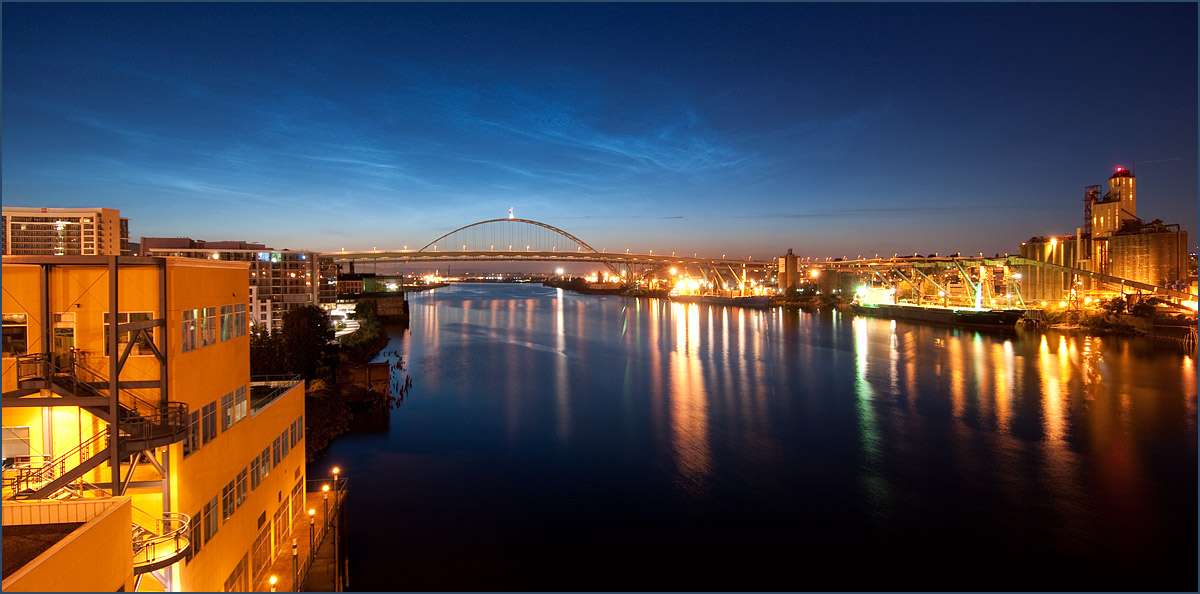Pearlescent blue clouds mysteriously appeared in far northern latitudes after the eruption of Krakatoa in Indonesia. Perhaps these noctilucent clouds existed before the massive eruption threw enormous quantities of sulfurous vapors into the stratosphere. Perhaps the bright sunsets that attracted millions of eyes resulted in the wispy ultra high clouds finally being noticed. Perhaps. But why then are these strange clouds spreading south? Why are clouds once seen only in places far to the north such as Norway and Finland now being seen as far south as Colorado?

Polar mesospheric clouds form between 47 to 53 miles (76 to 85 kilometers) above Earth’s surface when there is sufficient water vapor at these high altitudes to freeze into ice crystals. The clouds are illuminated by the sun when it is just below the visible horizon, lending them their night-shining properties. In addition to the polar mesospheric clouds trending across the center of the image, lower layers of the atmosphere are also illuminated. The lowest layer of the atmosphere visible in this image--the stratosphere--is indicated by dim orange and red tones near the horizon.
Electric blue clouds, literally at the edge of space, have been recently seen glowing in the dark from Oregon to Colorado to Virginia, further south than they have ever been seen. Until the last several decades they were always seen north of 50 N Latitude. No one is sure why the clouds are moving south but global warming is a suspected cause.Noctilucent clouds form at exceedingly cold temperatures around negative 125 Celsius, 50 to 100km (30 to 60 miles) above the earth's surface, in the mesosphere. The atmosphere is one hundred million times drier than the Sahara desert, but clouds form because the temperature is so low. They are seen in midsummer when the moisture from the stratosphere (the layer below the mesosphere) is known to upwell into the mesosphere. One other likely source of water is upwelling methane gas. Methane is broken down by UV and high energy radiation to generate hydrogen gas which reacts with oxygen to form water. Material from incoming meteors may also add both tiny particles needed to seed the clouds and ice particles which vaporize. Powerful volcanic eruptions may also add particles that nucleate ice.

Noctilucent clouds over Portland by VictorVonSalsa Portland, Oregon 15July09
Less venting of natural gas from oil wells led to slowing of the growth rate of atmospheric methane from 1985 to 2007. The perfect match of methane levels to ethane levels during that period is the clue that ties the decline to oil and gas production activities. Natural processes do not release methane and ethane in tandem as oil and gas production does. In 2007 Arctic sea ice suffered a catastrophic decline and increases in Arctic methane levels were observed.




